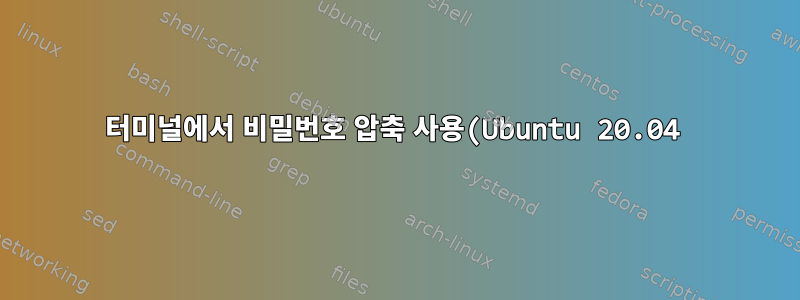.png)
명령을 실행하고 있어요
zip -p mypassword archive.zip -r 다운로드/
파일을 생성합니다
내 비밀번호.zip
내가 뭘 잘못했나요?
답변1
명령 작동 방식을 이해하려면 먼저 --help옵션 및/또는 man페이지(사용 가능한 경우)를 시도해 보십시오.
내 zip(Ubuntu 22.04).
$ zip --help
Copyright (c) 1990-2008 Info-ZIP - Type 'zip "-L"' for software license.
Zip 3.0 (July 5th 2008). Usage:
zip [-options] [-b path] [-t mmddyyyy] [-n suffixes] [zipfile list] [-xi list]
The default action is to add or replace zipfile entries from list, which
can include the special name - to compress standard input.
If zipfile and list are omitted, zip compresses stdin to stdout.
-f freshen: only changed files -u update: only changed or new files
-d delete entries in zipfile -m move into zipfile (delete OS files)
-r recurse into directories -j junk (don't record) directory names
-0 store only -l convert LF to CR LF (-ll CR LF to LF)
-1 compress faster -9 compress better
-q quiet operation -v verbose operation/print version info
-c add one-line comments -z add zipfile comment
-@ read names from stdin -o make zipfile as old as latest entry
-x exclude the following names -i include only the following names
-F fix zipfile (-FF try harder) -D do not add directory entries
-A adjust self-extracting exe -J junk zipfile prefix (unzipsfx)
-T test zipfile integrity -X eXclude eXtra file attributes
-y store symbolic links as the link instead of the referenced file
-e encrypt -n don't compress these suffixes
-h2 show more help
더 많은 도움말이 표시 됩니다 -h2. 그러나 man zip그것은 완전한 문서를 제공할 것입니다.
$ man zip
...
OPTIONS
...
-p
--paths
Include relative file paths as part of the names of files stored in the archive. This is the default. The -j option junks the paths and just stores the names of the files.
-P password
--password password
Use password to encrypt zipfile entries (if any). THIS IS INSECURE! Many multi-user operating systems provide ways for any user to see the current command line of any other user; even on
stand-alone systems there is always the threat of over-the-shoulder peeking. Storing the plaintext password as part of a command line in an automated script is even worse. Whenever possi‐
ble, use the non-echoing, interactive prompt to enter passwords. (And where security is truly important, use strong encryption such as Pretty Good Privacy instead of the relatively weak
아시다시피 -p과 는 -P다양한 작업을 수행하기 위한 다양한 옵션입니다. 그렇다면 필요한 옵션은 입니다 -P.


